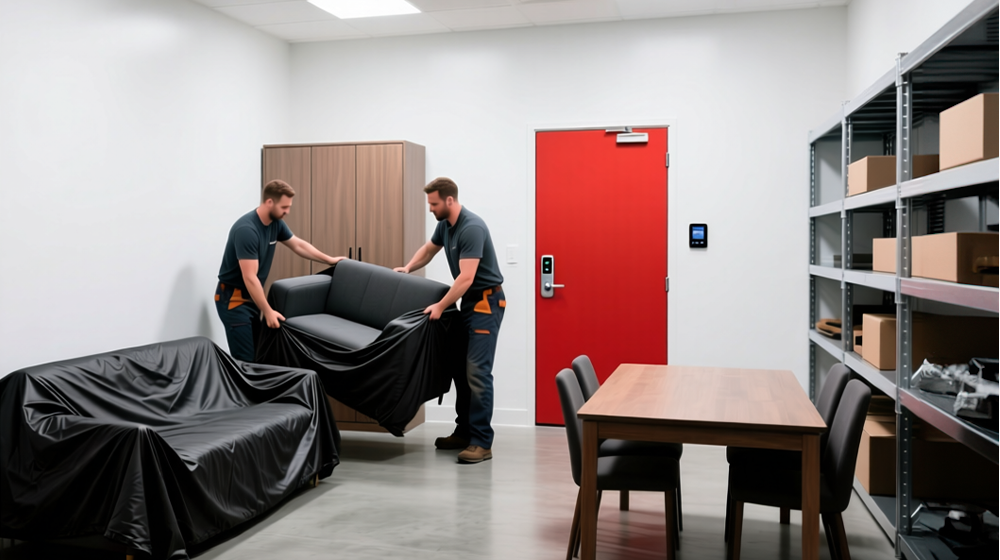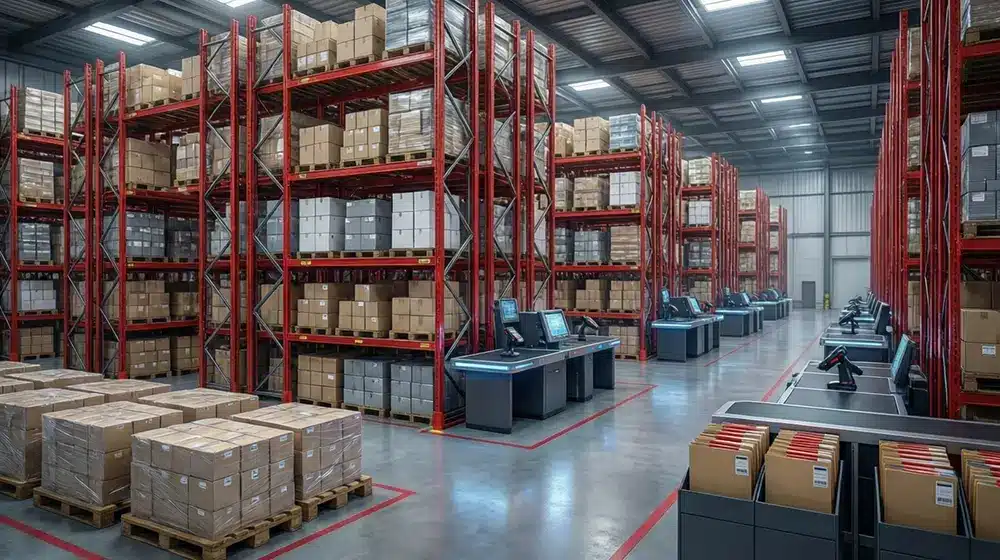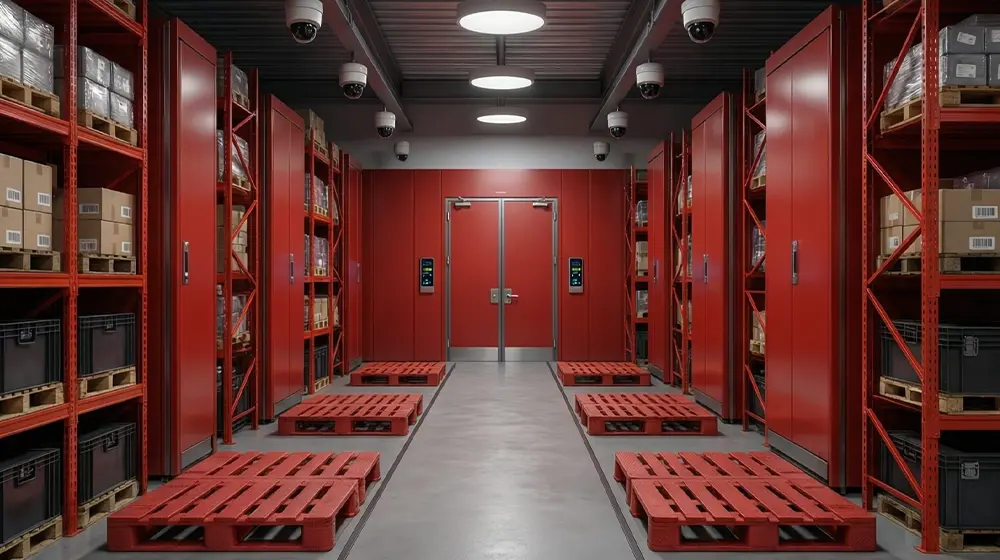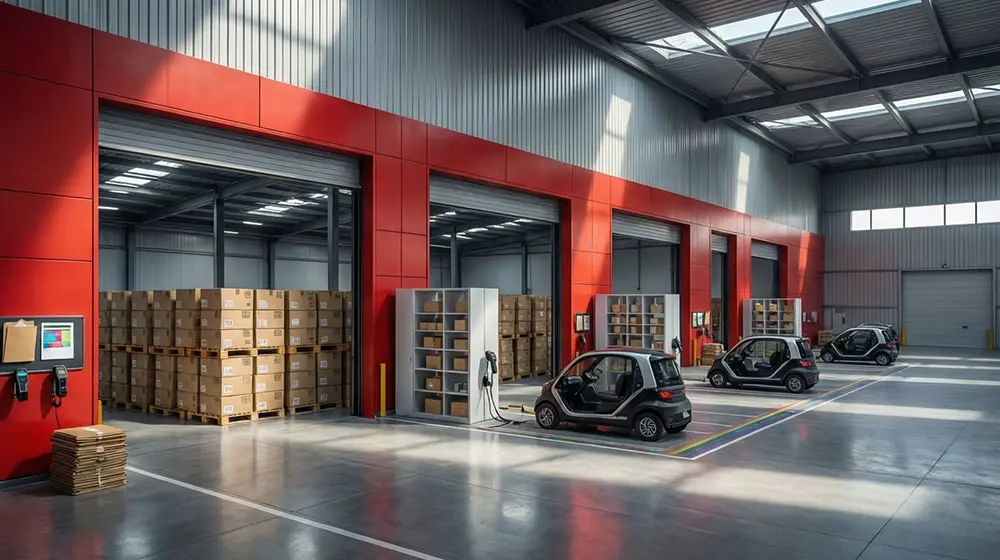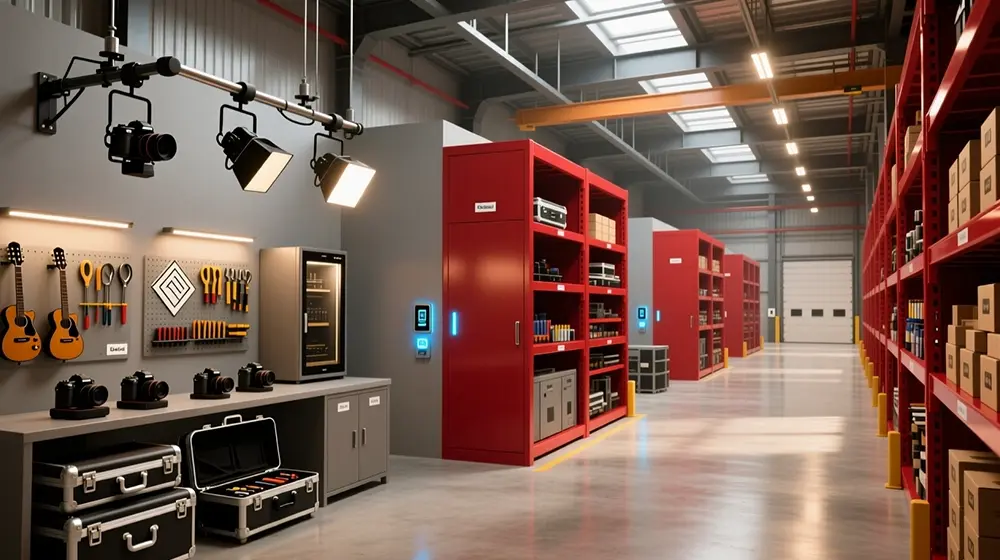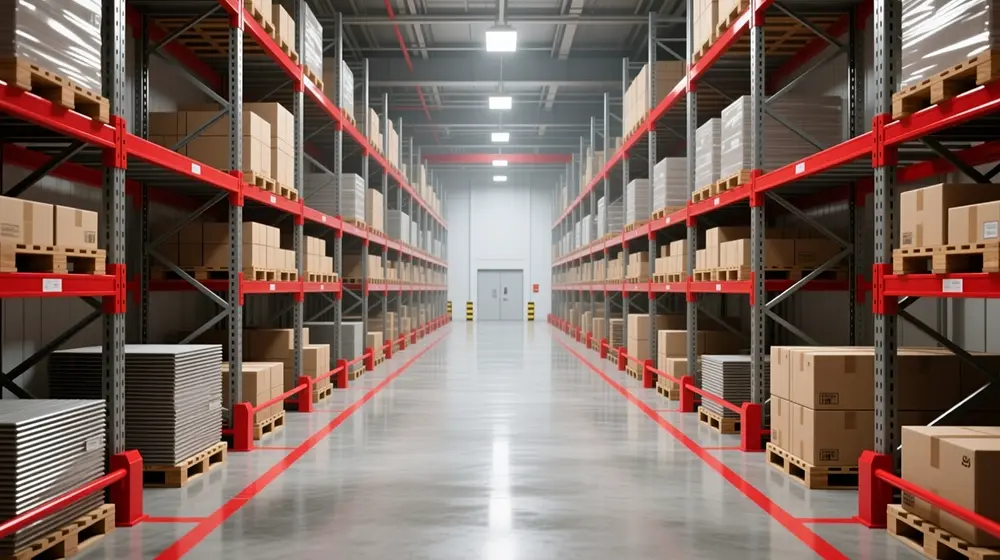Long-term furniture storage in Dubai is the preservation of residential or commercial furniture inside climate-controlled and secure facilities for 12 months or longer. Leading providers classify “furniture storage” as a dedicated vertical within their self-storage and warehousing services, reflecting Dubai’s growing demand for specialized solutions.
These facilities maintain temperatures between 18–24 °C and relative humidity between 40–55% to protect wood, leather, fabric, and metal furniture from Dubai’s heat and humidity extremes. They are equipped with 24/7 CCTV surveillance, gated access, fire suppression systems, and alarm monitoring to ensure asset security. Unit sizes are modular, ranging from compact lockers to full apartment-sized spaces, with optional services including professional packing, dismantling, and door-to-door transport.
Demand for long-term storage rises during expatriate relocations, home renovations, and commercial downsizing. According to the data, climate-controlled units represent over 50% of the global self-storage market and are projected to grow at ~9.8% CAGR through 2030, with Dubai operators seeing a 3–5 year capital payback on facility investments.
Why Must You Use Climate Control in Dubai Storage?
Climate control stabilizes temperature and humidity to prevent mold, warping, and corrosion. Dubai summers routinely exceed 40 °C, and humidity often rises beyond 70 %, creating conditions harmful to stored materials.
Reliable climate-controlled units maintain 18–24 °C temperature and 40–55 % relative humidity (RH) to protect wood, fabric, leather, and metal furniture from environmental stress.
If units lack control, mold can appear within 24–48 hours once moisture settles on surfaces in hot, humid conditions.
How Does Humidity Trigger Mold on Stored Furniture?
Mold spores activate above ~60 % RH and > 25 °C. Common indoor fungal genus (e.g. Cladosporium, Aspergillus) require warm, moist environments to germinate.
Wood, fabric, and leather furnish organic, porous substrates that absorb moisture, making them especially vulnerable.
Mold colonization weakens structural integrity, stains surfaces, and alters appearance.
In poorly ventilated corners, microbial growth spreads unnoticed, exploiting shaded, humid microclimates.

Which Furniture Types Face Highest Mold and Pest Risk?
Organic, porous materials such as solid wood, upholstery, and leather face the highest mold and pest risk because they absorb moisture and nutrients.
Dubai facility guidelines note that particleboard and plywood degrade faster than solid timber in humid environments.
Foam cushions trap moisture, making them retention zones for mold colonies.
Antique or heirloom wood lacking modern sealants cannot resist insect infiltration and fungal decay.
Metal elements corrode and joints loosen when humidity cycles cause repeated expansion and contraction.
How to Prepare Furniture Before Storage?
Pre-storage preparation significantly lowers long-term damage risk in UAE climates.
- Clean: Vacuum, dust, and wipe with an antibacterial solution; allow full drying before storing to avoid mold.
- Dismantle: Remove detachable parts (drawers, legs, cushions), bag fasteners, and label components.
- Wrap: Use breathable cotton or moving blankets; avoid tight plastic wraps that trap condensation.
- Elevate: Place furniture on pallets or blocks to ensure airflow under and around items.
- Insert desiccants: Place silica gel or calcium chloride packs within drawers, cabinets, or hollow spaces to absorb residual moisture.
How to Prevent Pest Infestation in Storage Units
Proactive pest control cuts damage risk by ~22 %. Dubai Municipality data shows untreated wood has ~22 % higher termite risk in storage.
- Seal wood with termite-resistant varnish or borate solutions.
- Deploy pheromone traps and insect growth regulators near unit corners.
- Schedule professional pest control at least once per year; general treatments in Dubai cost AED 229–299 + VAT for 1–3 bedroom properties.
- Practice Integrated Pest Management (IPM): inspect entry points, keep surroundings dry and sealed.
What Security & Facility Measures Matter Most?
Top storage facilities combine climate control with robust security and monitoring.
- Use 24/7 CCTV surveillance across all premises, with cameras covering access points and units.
- Implement access control via RFID cards, PIN systems, or biometric scanners.
- Deploy fire suppression systems and smoke detectors to mitigate fire risk.
- Use sealed flooring and dust filters to block particulate infiltration.
- Have facility staff inspect units regularly for leaks, pest signs, humidity deviations, and general anomalies.
What Is the Ideal Re-Inspection & Maintenance Calendar?
Quarterly inspection cycles detect damage early and reduce long-term loss by ~30%. IFMA + Self Storage Association Asia (2024) recommends quarterly checks for stored assets. Inspections should include humidity logs, visual scans, pest trap status, and odor checks.
| Quarter | Tasks | Purpose |
| Q1 (Jan) | Dust, vacuum, replace desiccants, inspect surfaces | Remove first-season mold/pollen deposits |
| Q2 (Apr) | Check RH logs, spot-clean mold stains, adjust airflow | Prevent escalation before summer |
| Q3 (Jul) | Apply pest treatment, repaint exposed wood edges | Guard against termite surge and cracks |
| Q4 (Oct) | Full inventory audit, photo-document condition, schedule repairs | Prepare for climatic transitions |
Why Inventory Documentation & Condition Recording Matter
Inventory documentation strengthens insurance claims and asset tracking reliability.
- Photograph evidence: Capture high-resolution, date-stamped photos from multiple angles to prove pre-storage condition.
- Dimensional data: Log measurable dimensions, finish type, and existing defects to build a baseline profile.
- Backups: Maintain both digital and hard copies of the inventory records.
- Condition grading: Use clear categories (e.g., excellent, minor wear, cracked) to enable claim verification and value calculation.
Having complete documentation reduces dispute times with insurers and simplifies inventory audits.
Which Insurance Options Cover Furniture in Dubai Storage
Storage-specific insurance covers fire, flood, theft, and restoration costs.
- Local providers: AXA Gulf and RSA Middle East offer policies starting at ~AED 50/month for stored furniture.
- Replacement value: Choose full replacement-value coverage over limited liability to recover maximum cost.
- Coverage type: Require all-risk or named perils policies to include fire, water damage, and accidental breakage.
- Policy upkeep: Keep policies updated and ensure coverage matches your documented inventory value.
Dubai insurance guidelines recommend combining facility liability with personal coverage for full protection against partial-loss scenarios.
How Much Does Long-Term Furniture Storage Cost in Dubai?
The cost of long-term furniture storage in Dubai depends on the size of the storage unit, whether it is climate-controlled, and its location. According to the UAE Self Storage Price Index, 25 sq ft lockers typically cost AED 300–400/month (around AED 12–16 per sq ft), making them a popular choice for storing a few essential furniture pieces.
For larger moves, 50 sq ft units — enough to hold most of a one-bedroom apartment’s furniture — rent for AED 900–1,400/month (AED 18–28 per sq ft).
Commercial furniture storage or warehouse-sized units can range anywhere from AED 500 to AED 4,000/month, depending on capacity and value-added services like climate control, pest prevention, and 24/7 security.
Key Price Factors
- Location: Downtown Dubai and Marina units cost more than those in Al Quoz or DIP.
- Climate control: Temperature- and humidity-regulated units carry a 20–50 % premium but protect better against mold.
- Access hours: 24/7 access facilities charge more than limited-hour sites.
- Contract length: Yearly rentals may save 10–15 % compared to month-to-month plans.
For a detailed breakdown of current market averages and trends, check the Self Storage UAE Price Index for live data across different unit sizes and providers.
Which Common Mistakes Increase Storage Damage Risk?
Improper storage practices accelerate furniture deterioration and financial loss.
- Over-wrapping: Plastic wrapping traps moisture, leading to mold and odor buildup.
- Skipping inspections: Quarterly checks are critical; missed visits allow unnoticed mold and pests to spread.
- Ignoring desiccant replacement: Saturated silica gel becomes ineffective, allowing humidity damage.
- Storing damp items: Even small amounts of moisture start mold growth on day one.
- Poor stacking or overcrowding: Reduces airflow, stresses joints, and causes structural warping.
Following proper storage protocols eliminates these avoidable risks and preserves furniture value.
How to Assess & Choose the Best Storage Facility
The choice of the facility must be made according to very stringent, quantifiable safety and preservation requirements.
- Check climate conditions: Check reported ranges of temperature and humidity (18-24 °C, 40-55% RH).
- Request logs: Requests live sensor data or third-party humidity audit reports.
- Check pest control: Check that there are scheduled and documented treatments in place.
- Assess security: Find 24/7 CCTV, fire suppression, alarms, and access control.
- Check insurance opportunities: Ascertain the presence of replacement-value, restoration insurance.
- Measure convenience: Select a facility that is convenient to home so that the risk of handling is reduced during relocations.
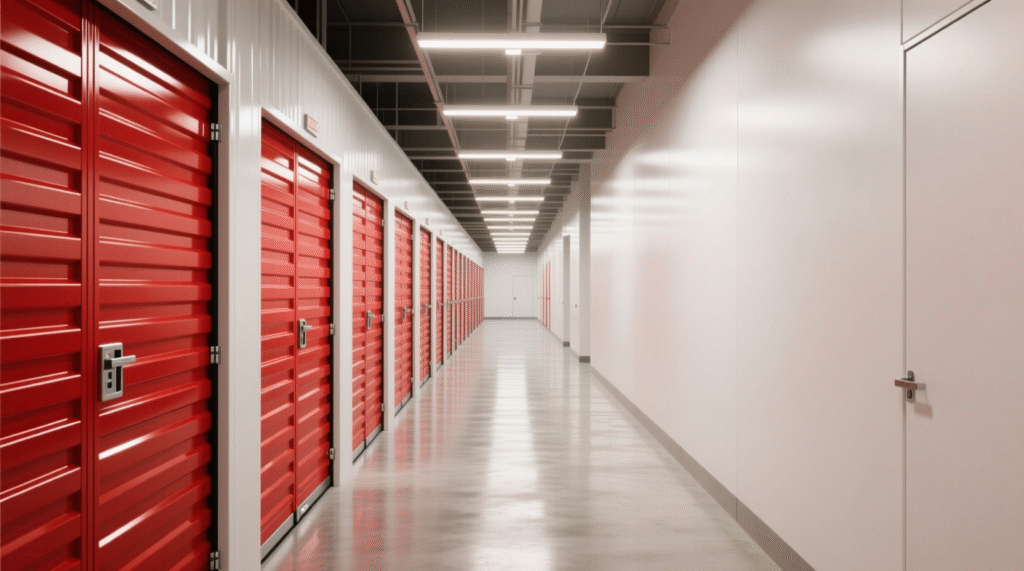
Conclusion
Effective long-term furniture warehousing in Dubai requires a total preservation plan. The basis of inhibiting the growth of mold and warping is climate control, 18-24 °C, 40-55 RH, and the foundation of protecting furniture is proper pre-storage preparation, such as cleaning, wrapping, and using desiccant that protects furniture at the source. Quarterly pest control treatments (AED 229-299) and quarterly inspections prevent further growth of the damage and ensure that the wooden objects are free of termites. Extensive insurance cover and precise documentation protect the financial worth of your stored assets and expedite the claims. UAE Self Storage Price Index price benchmarks indicate that 25 sq ft units cost AED 300-400 and 50 sq ft units cost AED 900-1,400, so facility selection, i.e., security, humidity logs, and staff quality, just matters as much as price. When all these combine, your furniture is secure, can be reused again, and its worth in the market can last many years.
